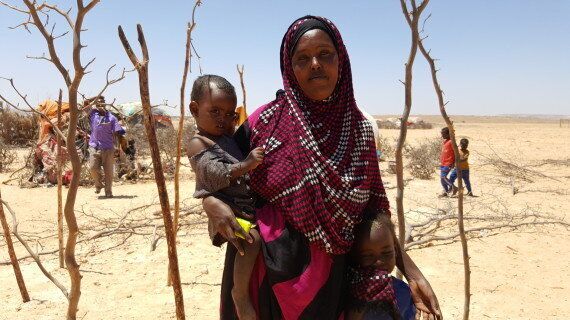"Are you apprehensive? It's your first time here, yes?" The sharp-suited Somali with an English accent tipped his Panama hat as we descended onto the heat-blasted runway at Hargeisa airport, North-west Somalia. "There's no need, it's quite safe. The local people would apprehend anyone dangerous long before they reached you. Everyone's on watch you see."
My fellow traveller is a member of Somalia's diaspora and was visiting, like us, to assess the effects of a drought which has raised fears of imminent famine. Somalis heralding from the self-declared state of Somaliland (recognised internationally only as an autonomous region within Somalia), are fiercely proud, not only of the relative security they maintain (armed groups active elsewhere are absent here) but also because of their self-sufficiency as nomadic pastoralists, and their community solidarity in times of crisis.
As the Disasters and Emergencies Committee (DEC) launched its East Africa food crisis appeal back in the UK, we were in Somalia to meet affected communities and see how the CARE International team was scaling up emergency activities. To reach some of CARE's projects we would travel in convoy over 700km from the Somaliland capital, crossing parched rivers within arid landscapes emptied of people, populated only by voluptuous termite mounds, huge structures scattered across the terrain like earthen sculptures. In places where the ground resembled desert, our wheels spun jet streams of dust so thick the guides had to drive in parallel to avoid being blinded. Everywhere, the sun blanched the colour from the remaining wildlife.

At the point the sky met the horizon, the intense heat created the illusion of water. Other than the abandoned carcasses of goats and sheep by the side of the road, the only animals we passed were occasional thin groups of camels feeding listlessly from acacia trees. Able to survive for weeks without water, these ragged dromedaries, like the rest of Somalia's livestock, were clearly dying. Before the rains failed again in 2016 these animals were destined for Saudi Arabia, a vital market which closed abruptly in December when Saudi authorities cited fears of illness among Somali livestock. When an economy is so dependent on livestock exports as it is in Somalia such bans are crippling, not least because the blockade of war-affected Yemen has prevented sales to Somalia's other main trading partner.
After two days we stopped in the village of Garadag: a few single-storey concrete structures and numerous sheds with corrugated roofs huddled around a central well. Over the preceding months, as rivers had dried up, Garadag's numbers had swelled. Nearby, dozens of displaced families had set up temporary shelters, arriving in the village searching for water, food and support. We asked Somali colleagues and community leaders if this caused conflict. Each time we received the same response: "We help one another."
"Elders say they have never seen a drought like this,' said Garadag's Vice-Mayor, addressing us with dignity in the stifling village hall. "In Garadag, we've received 800 families from surrounding areas. They can't find water. In the whole district, 20 villages have emptied - 11,000 families are displaced. People have already died because of lack of food. They are starving."

The sheer scale of this catastrophe means that usual coping mechanisms, such as transporting livestock to healthier grazing land, are not available to affected pastoralists. Not only are neighbouring districts affected, but also bordering countries.
"In times of drought, we move to another region," said one henna-bearded elder. "Now everyone is affected. We used to go to Djibouti but there's drought there; also in Kenya and Ethiopia. There's no way out.'
Across from the village hall, past the well, the newcomers could be identified by makeshift shacks of mud, sticks and plastic rags. Surrounded by children, Amina was assembling the skeleton structure of a new shelter. To reach the village, she had walked 70km under searing heat with six children and her elderly parents.
"Thirst drove us here," she said. "The children were asking for water and I couldn't give it to them. Our animals are all gone." Somalis' assets are held in livestock, not in current accounts, so their loss means bankruptcy. Amina's family was now surviving through the combined help of the villagers and humanitarian agencies.
Elsewhere, we heard similar stories of Somalis supporting each other. In a settlement outside Burao, Somaliland's second largest town, a savings association set up by CARE International and run entirely by local women was providing them not only with status and a voice in the community but also emergency support. Zeinab, one of CARE's female project officers, explained how women pay regularly on behalf of their families into the shared scheme. In normal times, the association can provide loans for entrepreneurial ventures such as small shops. During times of crisis such as severe drought, the collected funds offer a form of insurance for the most vulnerable.
"In one village I visited last week, not only was the association using savings to help their own people in the group," said Zeinab. "They also paid for trucks to get water to new arrivals in the community.'
The humanitarian response is well underway in Somalia - and it is the Somalis who are leading it.
DEC member charities like CARE are already delivering life-saving assistance in Somalia and nearby countries. But, they need more money to help reduce the scale and severity of the crisis. You can help.